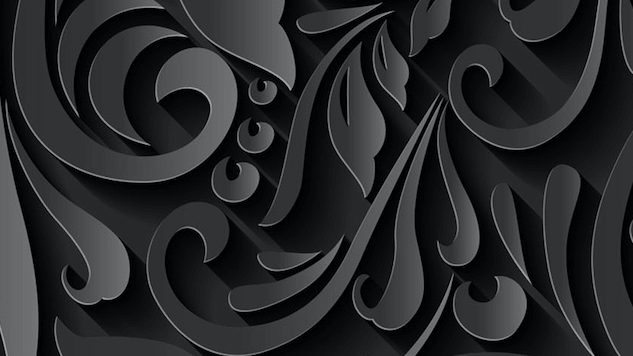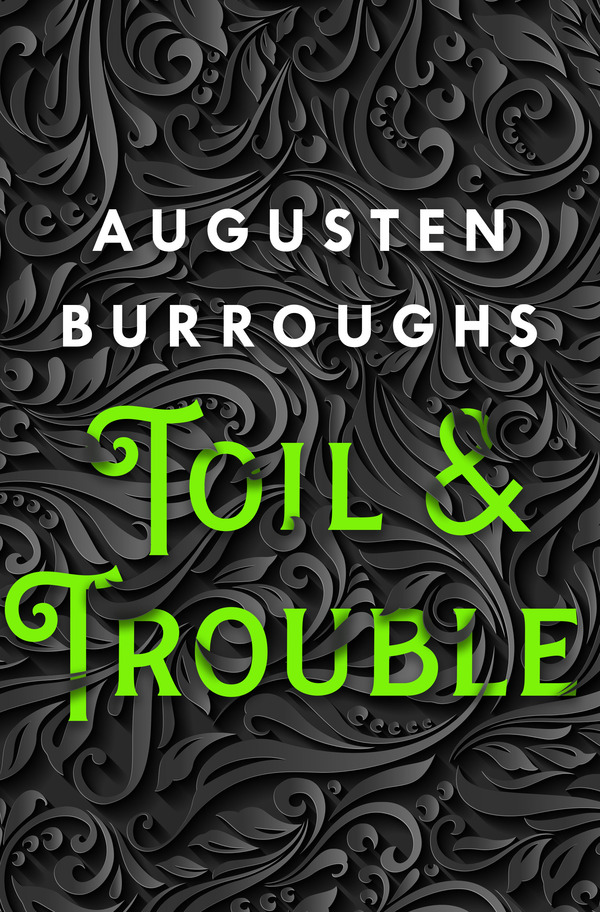Exclusive Cover Reveal + Excerpt: Augusten Burroughs Writes “I Am a Witch” in New Memoir, Toil & Trouble
Cover design by Olga Grlic
“I wouldn’t believe in [witches and witchcraft], and I would privately ridicule any idiot who did, except for one thing: I am a witch,” writes Augusten Burroughs in Toil & Trouble.
By viewing his life through the lens of the supernatural, the bestselling author of Running with Scissors and Lust & Wonder weaves a powerful memoir tackling identity. Intrigued? Here’s the book’s description from the publisher:
For as long as Augusten Burroughs could remember, he knew things he shouldn’t have known. He manifested things that shouldn’t have come to pass. And he told exactly no one about this, save one person: his mother. His mother reassured him that it was all perfectly normal, that he was descended from a long line of witches, going back to the days of the Pendle witches of Lancashire, England. It was a bond that he and his mother shared—until the day she left him in the care of her psychiatrist to be raised in his family (but that’s a whole other story). After that, Augusten was on his own.
From the hilarious to the terrifying, Toil & Trouble is a chronicle of one man’s journey to understand himself, to reconcile the powers he can wield with things with which he is helpless. There are very few coincidences, as you will learn. Ghosts are real, trees can want to kill you, beavers are the spawn of Satan, houses are alive and in the end, love is the most powerful magic of all.
St. Martin’s Press will release Toil & Trouble on October 1st, but you can view the gorgeous cover and read an exclusive excerpt today!
Cover design by Olga Grlic, Executive Art Director at St. Martin’s Press
Enjoy reading the excerpt below, in which Burroughs defines what “witches” and “witchcraft” truly mean. You can preorder Toil & Trouble here.

There are three things you should know about witches.
Number one: as long as there have been human beings there have been witch beings.
Number two: witches have always been misunderstood. For most of recorded history they have been persecuted and killed, and this continues today in many parts of the world. Since the majority of those accused and convicted have been female, the hunt for witches is yet another vehicle for the persecution of women of every color by (of course) white men.
When the hateful Puritans landed at Plymouth Rock, the men wasted no time launching their bigotry grenades against any women who didn’t fit their own image of what a woman should be and how she should behave. This began with—surprise!—a woman of color, a slave named Tituba, but any woman who wasn’t subservient or who exhibited a modicum of individuality and independence was likely to be accused. Several men were also put to death in colonial Salem, so one can only speculate that they, too, failed to behave in a manner expected of the White Puritan Male, America’s first frat guys.
It is no longer a crime in this country to be a witch, but that’s mainly because Americans consider the notion patently absurd. Scientifically minded people look back on the witch trials and cringe at the primitive stupidity, not so much because alleged witches were killed but because the accusers actually believed that witches existed.
Which brings me to number three: witches are real. And witchcraft—the work witches do, their craft—is also real.
So what is a witch?
I define a witch as someone—female, male, neither, other, both—who has the innate ability to focus on a desired outcome with such perfect clarity, intensity, and singularity that the desired outcome can materialize, provided it does not violate the natural laws of the universe. This is why a witch cannot turn a man into a goat, but a witch may very well know if a man five thousand miles away is about to be trampled by a goat. Witches may experience what we call “time” and “distance” in such ways that “time” and “distance” collapse or are circumvented. Frequently, they possess information that it does not seem possible one could have, such as knowledge of events that will occur further down the time line.
Witchcraft is not a religion. It’s the craftwork of a witch; it’s the thing witches do. Wicca is a religion, started by Englishman and occultist Gerald Gardner in the early 1950s. Many Wiccans are witches, too, practicing some form of craft as part of their faith. Druidism is another pagan religion that incorporates witchcraft.
There are many different “styles” or “schools,” from the extremely formalized and ritualized to the improvised and spontaneous. There are those who engage in highly structured rituals, and while these are interesting and kind of cool, they aren’t necessary.
Different witches have different abilities. Some are excellent at creating shields: protecting loved ones from harm, hiding in plain sight, traveling through life without a scratch. Others are adept at causing things to happen or not happen. Which is to say, they are sculptors of matter, exerting influence—and change—over the energy we observe as matter. Still others have amazing powers of perception and reception. They might feel a devastating storm coming long before it arrives, or perhaps they know of events occurring many miles away. Witches can possess any and all of these traits in greater or lesser degree.
Here’s a partial list of things I don’t believe in:
God
the devil
heaven
hell
Bigfoot
ancient aliens
past lives
life after death
vampires
zombies
Reiki
homeopathy
Rolfing
reflexology
Note that “witches” and “witchcraft” are absent from this list. The thing is, I wouldn’t believe in them, and I would privately ridicule any idiot who did, except for one thing: I am a witch.
This is a fact I’ve kept to myself. Even my husband didn’t know for years. Yet witchcraft has been an almost daily part of my life since I was a little boy. It was the strongest bond my mother and I had when I was young: our common power, our shared secret. She was a witch from a long line of witches and I was her second-born son—an accident—and, as she would discover eight years after my birth, also a witch. She schooled me, day after day, story after story, passing her knowledge and wisdom along to me, until her mind was quite abruptly shattered by mental illness just as I entered adolescence.
From that point, I was on my own.
Toil & Trouble. Text credits © 2019 by Augusten Burroughs and reprinted by permission of St. Martin’s Press.








































